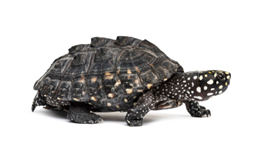Many animals live both on land and water. These animals are called Amphibians. They have special abilities that allow them to survive in both environments. These fascinating land and water animals can breathe through their skin in water and use their lungs to breathe on land. This ability to live in two different habitats makes amphibians unique among other animals.
Some examples of amphibians are frogs, toads, salamanders, and newts.
Animals that live on land and water
Below is the table featuring animals that live on land and water, along with their food preferences and typical habitats:
Serial Number | Amphibian Name | Food | Location Found |
1 | Spotted salamander | Insects, worms | North America (forests, wetlands) |
2 | Leopard frog | Insects, small vertebrates | North America (ponds, marshes) |
3 | American bullfrog | Insects, fish, small mammals | North America (lakes, ponds) |
4 | Cane toad | Insects, small vertebrates | Australia, parts of Asia |
5 | Axolotl | Aquatic invertebrates, small fish | Mexico (freshwater lakes, canals) |
6 | Wood frog | Insects, spiders, small invertebrates | North America (forests, wetlands) |
7 | Tiger salamander | Insects, small vertebrates | North America (woodlands, ponds) |
8 | Rough-skinned newt | Insects, small fish, crustaceans | North America (streams, ponds) |
9 | American toad | Insects, spiders, small invertebrates | North America (forests, grasslands) |
10 | Eastern newt | Insects, small fish, aquatic invertebrates | North America (ponds, lakes) |
11 | Hellbender | Fish, crayfish, aquatic insects | Eastern North America (rivers, streams) |
12 | Cuban tree frog | Insects, small vertebrates | Cuba, Florida (trees, shrubs) |
13 | Koh Tao Island caecilian | Aquatic invertebrates, small fish | Thailand (streams, wetlands) |
14 | Spring peeper | Insects, spiders, small invertebrates | North America (forests, wetlands) |
15 | Pacific tree frog | Insects, spiders, small invertebrates | North America (forests, grasslands) |
16 | Ringed salamander | Insects, small vertebrates | North America (forests, wetlands) |
17 | Golden poison frog | Ants, beetles, termites | Central and South America (rainforests) |
18 | Chinese giant salamander | Fish, crustaceans, aquatic insects | China (rivers, streams) |
19 | Desert rain frog | Insects, small vertebrates | Namibia (desert regions) |
20 | Common mudpuppy | Fish, crayfish, aquatic insects | North America (lakes, rivers) |
American Alligators
American alligators used to live in a large area in the southeastern United States, but now they are found in a smaller range. They can walk on land to move between water sources, lay eggs, and bask in the sun. When they go into the water, they slide in on their bellies.

Alligators are better at swimming than running, but they can run up to 10 miles per hour for short distances. All 23 crocodilian species, not just alligators, are good at both walking on land and swimming in water.
Spotted Turtles
The pretty black-and-yellow spotted turtle (Clemmys guttata) is a native of North America that lives comfortably on land and in water. Even though they may not be as skilled at swimming as sliders (Chrysemys sp.) or softshell (Apalone sp.) turtles, they can still swim pretty well. Spotted turtles prefer to stay in shallow water and are usually found in wetlands and ponds with sandy or muddy bottoms.

They mainly eat fish, invertebrates, and plants while in the water. When they are on land, these 4-inch turtles are in danger of being eaten by predators, so they will quickly head back to the water if they get scared. Unlike spotted turtles, all aquatic turtles can move on land, but some of the land-dwelling tortoises are not good swimmers.
Two-Lined Salamanders
The Southern two-lined salamanders live in the southeastern United States. They lay eggs in the water, and when they hatch, they become fully aquatic larvae. These salamanders are good at living on land, but if they feel threatened, they will go into the water.
Like all Plenthodontidae family members, they don’t have lungs. The larvae breathe through their gills in the water, and the adults breathe through their moist skin. In addition to the two-lined salamanders, there are many other salamander species and frogs that are comfortable both on land and in the water.
Animals that are not Amphibians
Some animals live on land and water but are not amphibians.
Walrus
Walruses are social creatures and can be found outside of the water as well. You may be able to see them at zoos across North America! They find safety in groups. This is because when they’re out of the water, they are quite vulnerable to predators. Walruses are a species of mammal that can be found in the Arctic and subarctic regions.

They are primarily land animals, but they spend about two-thirds of their time in the water. Walruses can swim up to 22 miles per hour, making them one of the fastest-swimming marine mammals. Another interesting fact about walruses is that they can rest on land or bear their young on land, which is a surprising way for them to move around and compared with most marine mammals.
Penguin
Penguins are known for their unique way of walking, swimming skills, and friendly behaviour towards humans. They can be seen in various places like Angola, Antarctica, Argentina, Australia, Chile, Namibia, New Zealand, and South Africa.
Conclusion
Teaching children to respect wildlife instils values such as empathy and compassion. Understanding wildlife is crucial for igniting curiosity, empathy, and environmental consciousness in children. By providing them with opportunities to explore and engage with nature, we nurture them to become compassionate and responsible global citizens.
For more such informative blogs, Visit Mother’s Pet Kindergarten.













Recent Comments